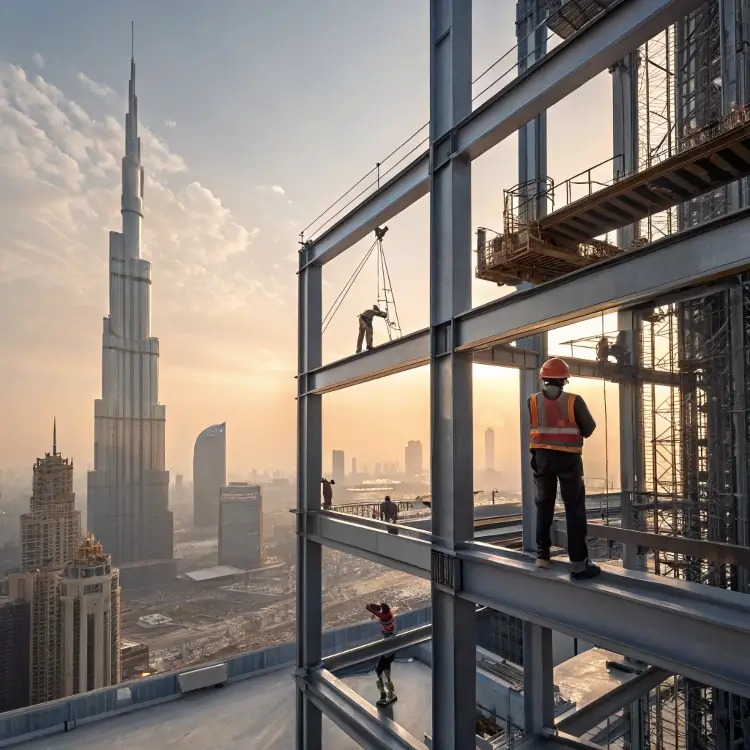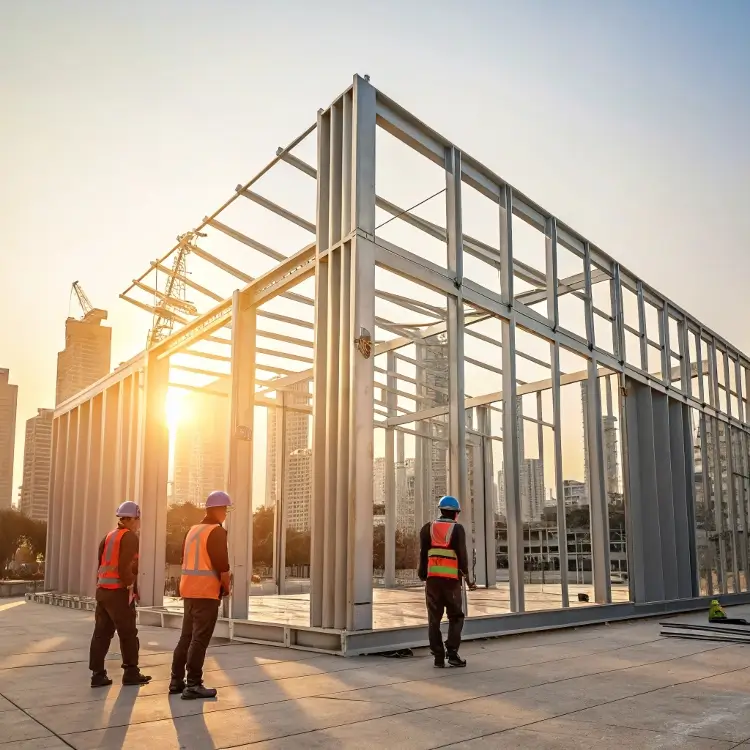What Industries Benefit Most from Large Aluminum Extrusion Solutions?

When building something big and complex, using the wrong material can be a costly mistake.
Industries like construction, transportation, energy, and custom equipment manufacturing rely on large aluminum extrusions to boost strength, lower weight, and simplify assembly.
If you’re sourcing materials for demanding industrial projects, understanding where and how large aluminum extrusions are used can help you make better choices.
Which Industries Rely Heavily on Large Aluminum Extrusions for Structural Integrity?

Buildings and machines can’t stand without strong frames—and steel isn’t always the answer.
Construction, infrastructure, and heavy machinery industries depend on large aluminum extrusions for lightweight but strong structural frames1.
Aluminum extrusions are often used to form the skeletons of buildings, bridges, and industrial machines. Unlike steel, aluminum resists corrosion and weighs much less, making it ideal for prefabricated parts and modular systems.
How Aluminum Supports Structural Needs
Aluminum extrusions allow for custom shapes that can distribute stress evenly. This is vital for construction sites, where ease of transport and assembly matters. Common use cases include:
| Industry | Typical Use Cases |
|---|---|
| Construction | Curtain walls, beams, frames, window systems |
| Infrastructure | Bridge decking, pedestrian walkways, road supports |
| Machinery | Base frames, lifting systems, equipment housings |
These industries also benefit from aluminum’s long lifespan. It doesn’t rust. It can be anodized or powder coated for extra surface protection. Most importantly, large extrusions reduce the number of parts needed, cutting down on welding and fasteners.
This simplification also helps avoid stress concentration points, improving overall safety and reliability. For large projects, where downtime is costly, that reliability is a game changer.
How Do Transportation Sectors Utilize Large Aluminum Extrusions for Efficiency and Weight Reduction?

Fuel costs go up. Regulations get stricter. Vehicles need to be lighter, but just as strong.
In aviation, rail, and commercial vehicle manufacturing, aluminum extrusions2 reduce weight while preserving structural integrity.
Transportation sectors face intense pressure to reduce emissions. Aluminum is 60% lighter than steel. Using large extrusions instead of welded steel parts allows for longer lengths, smoother surfaces, and fewer joints—all of which improve aerodynamics and safety.
Common Transportation Applications
| Sector | Application Areas |
|---|---|
| Aviation | Cabin frames, cargo handling systems |
| Rail | Train car bodies, underframes, floor systems |
| Commercial Truck | Trailer frames, roof rails, cross-members |
These components must handle vibrations, stress loads, and sometimes extreme temperatures. Aluminum performs well under all these conditions, especially when alloys like 6061-T6 or 6063-T5 are used.
Manufacturers also benefit from fast fabrication and customization. Large hollow sections or multi-chamber profiles can be made to exact dimensions. This flexibility means designers don’t have to compromise between strength and weight.
For companies like ours at Sinoextrud, this is where we really shine. We offer high-strength alloys and precision machining that meet the demanding specs of transportation clients across Africa, North America, and Japan.
What Role Do Large Aluminum Extrusions Play in Renewable Energy Projects?

Green energy projects can’t afford delays or low-quality materials—they have to last decades.
Aluminum extrusions are critical in solar, wind, and hydro power systems where strength, corrosion resistance, and low weight matter.
In solar power3, aluminum framing is used to hold panels on rooftops or fields. In wind turbines, internal platforms and service ladders are often made of large extruded sections. These structures face weather every day. Aluminum doesn’t corrode, even in salty coastal air or dry desert climates.
Renewable Energy Use Cases
| Energy Type | Extrusion Application |
|---|---|
| Solar | Panel frames, racking systems, inverter enclosures |
| Wind | Internal ladders, service platforms, base structures |
| Hydro | Structural frames, generator housing components |
Our factory uses ISO-certified processes to ensure consistency and long-term durability. We also provide CNC machining and surface treatments to meet highly specific renewable energy standards4. For example, we’ve worked on solar racking systems where custom slots and profiles needed to match both American and European component specs.
Many renewable projects are in remote areas. That’s why weight reduction matters—not just for function, but for transport and installation. Every kilogram saved lowers logistics costs.
Why Are Large Aluminum Extrusions Gaining Popularity in Custom Industrial Equipment Manufacturing?

When machines are one-of-a-kind, you need materials that can do it all—lightweight, strong, customizable.
Custom machine builders use large aluminum extrusions to create durable frames, support arms, and enclosures that are quick to assemble and easy to modify.
Industries like automation, packaging, and electronics need machines tailored to specific workflows. Steel frames are heavy and slow to modify. Aluminum extrusions offer flexibility. Slots, holes, and channels can be added with CNC. Need a change? No need to weld—just reconfigure.
Why Aluminum Is Ideal for Custom Machines
| Feature | Benefit |
|---|---|
| Modular design | Easier to assemble and reconfigure |
| Lightweight | Easier to transport and install |
| High surface precision | Ideal for sliding systems, sensors, or guides |
| Customizable finishes | Matches branding or environment needs |
We supply profiles with fine tolerances—±0.1 mm in critical dimensions. This precision matters when clients integrate linear motion systems or robotic components. It ensures everything lines up correctly.
We also help clients with special requirements. Some need profiles with internal cable routing. Others require special coatings or low-friction surfaces. We’ve delivered custom aluminum parts that reduce the total component count by 30% or more.
The trend is clear: more industries want equipment that can scale and adapt. Aluminum extrusions make this possible.
Conclusion
Large aluminum extrusions are changing the way industries build strong, light, and flexible systems—from transportation to renewable energy to custom machinery.
-
Learn about the critical role of structural frames in ensuring safety and reliability in construction and machinery. ↩
-
Explore how aluminum extrusions enhance vehicle performance and reduce weight, crucial for modern transportation efficiency. ↩
-
Discover the latest advancements in solar power technology and how materials like aluminum are revolutionizing the industry. ↩
-
Learn about the essential standards that materials must meet in renewable energy projects to ensure safety and efficiency. ↩



